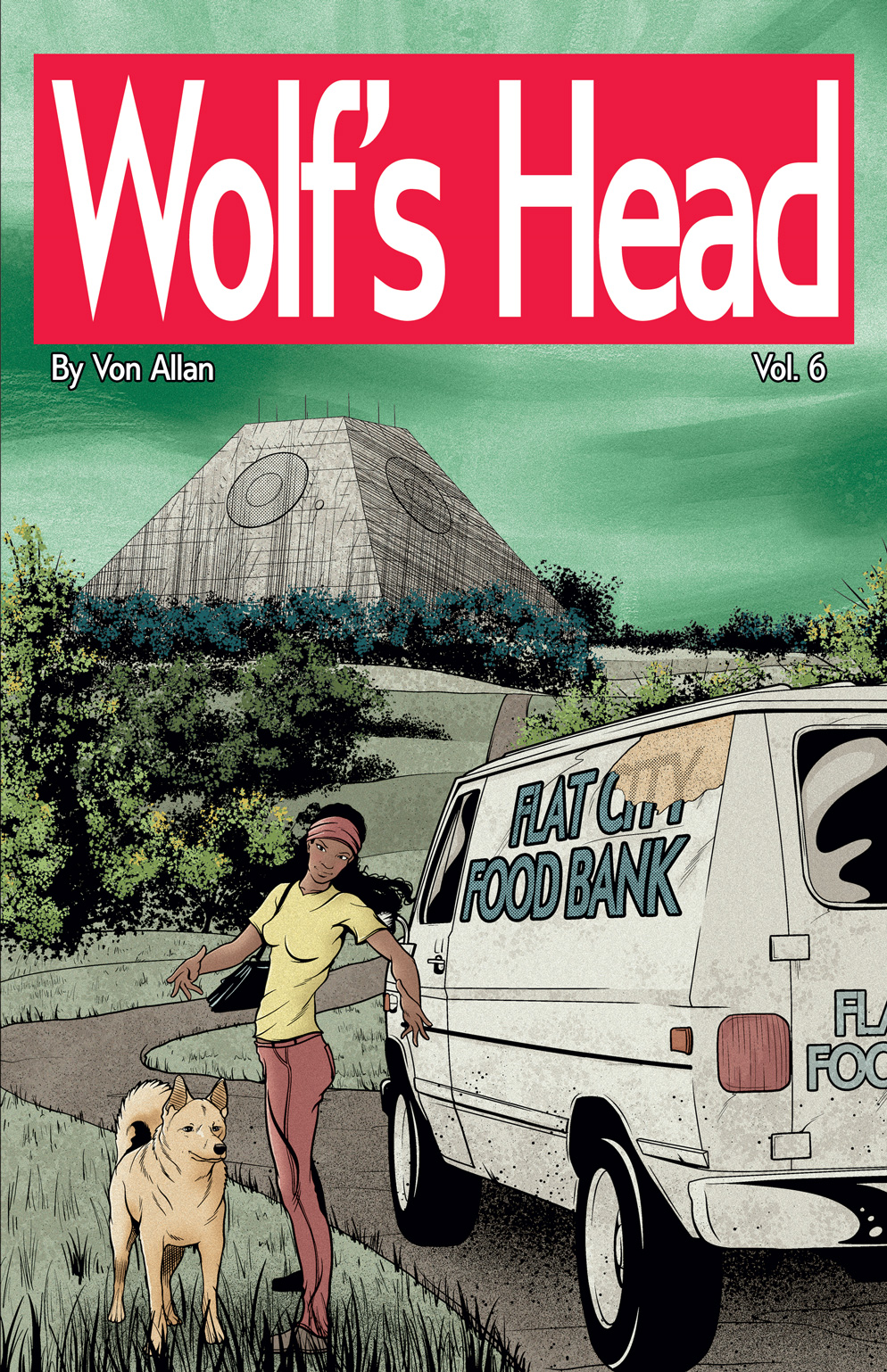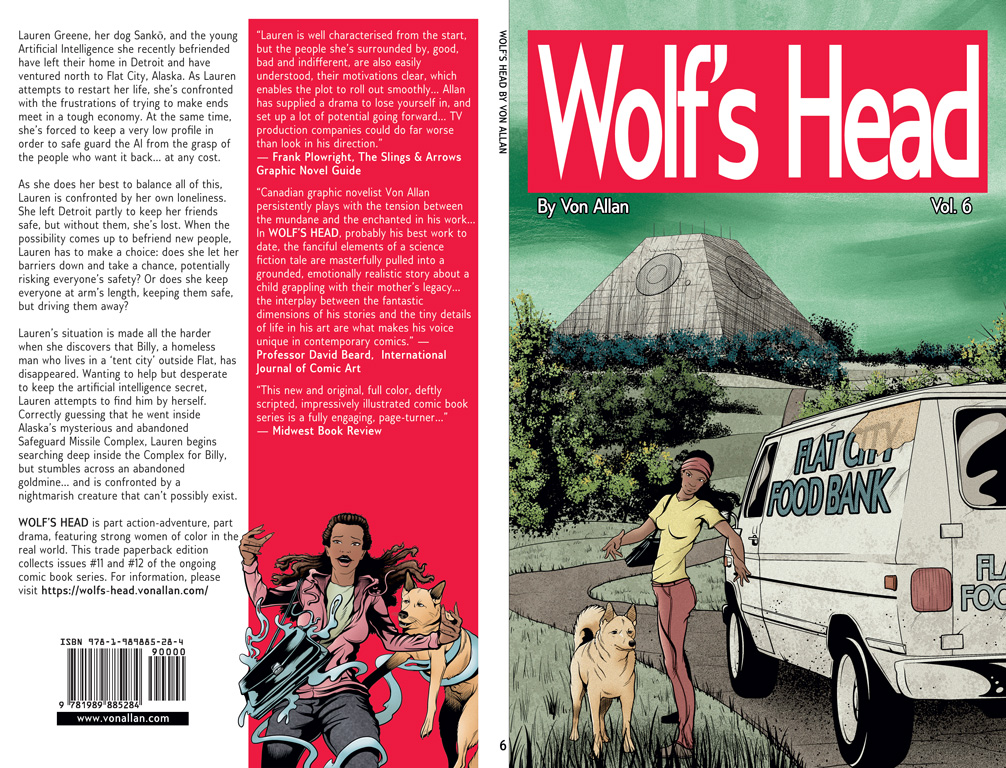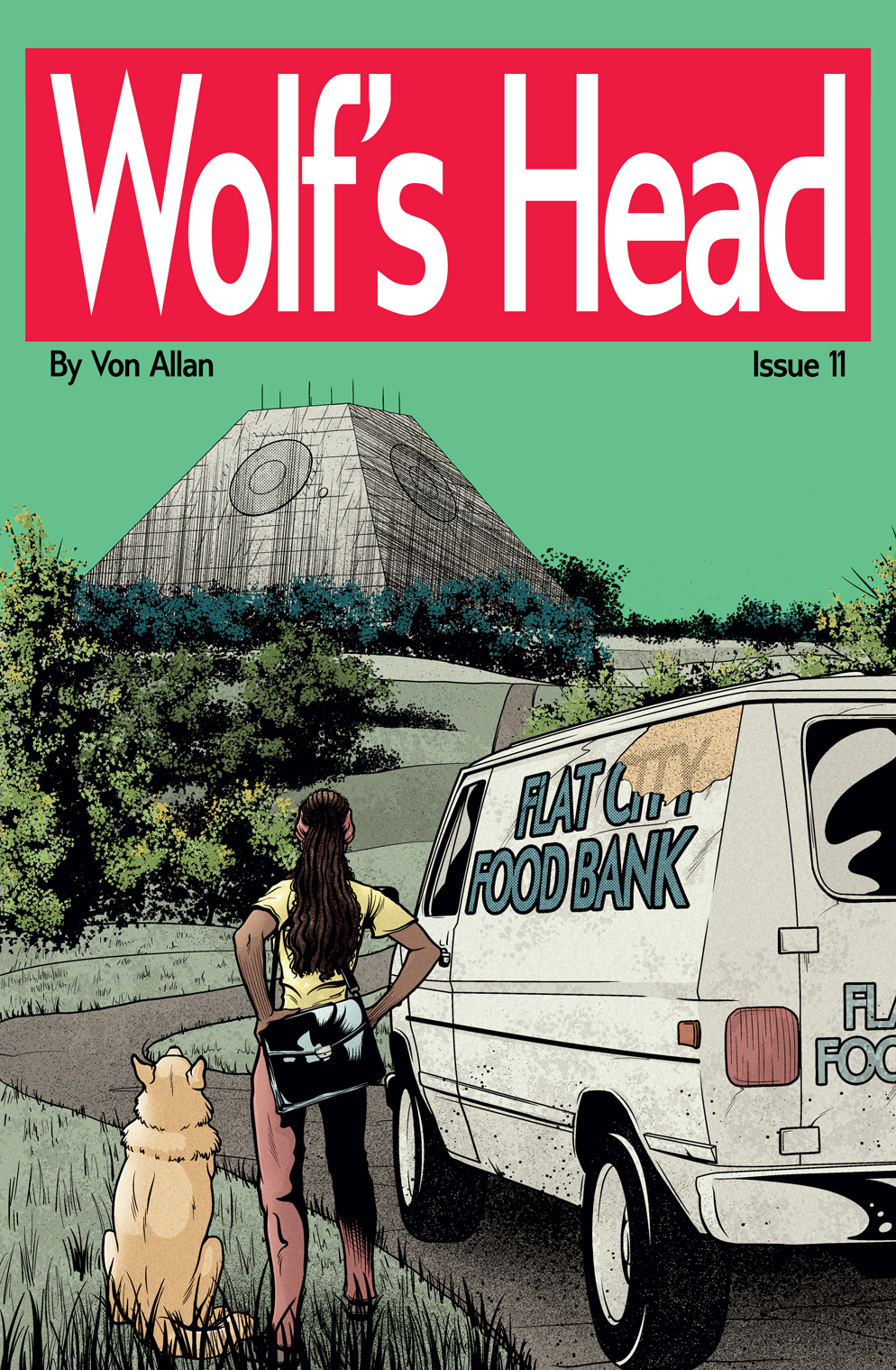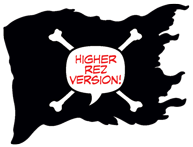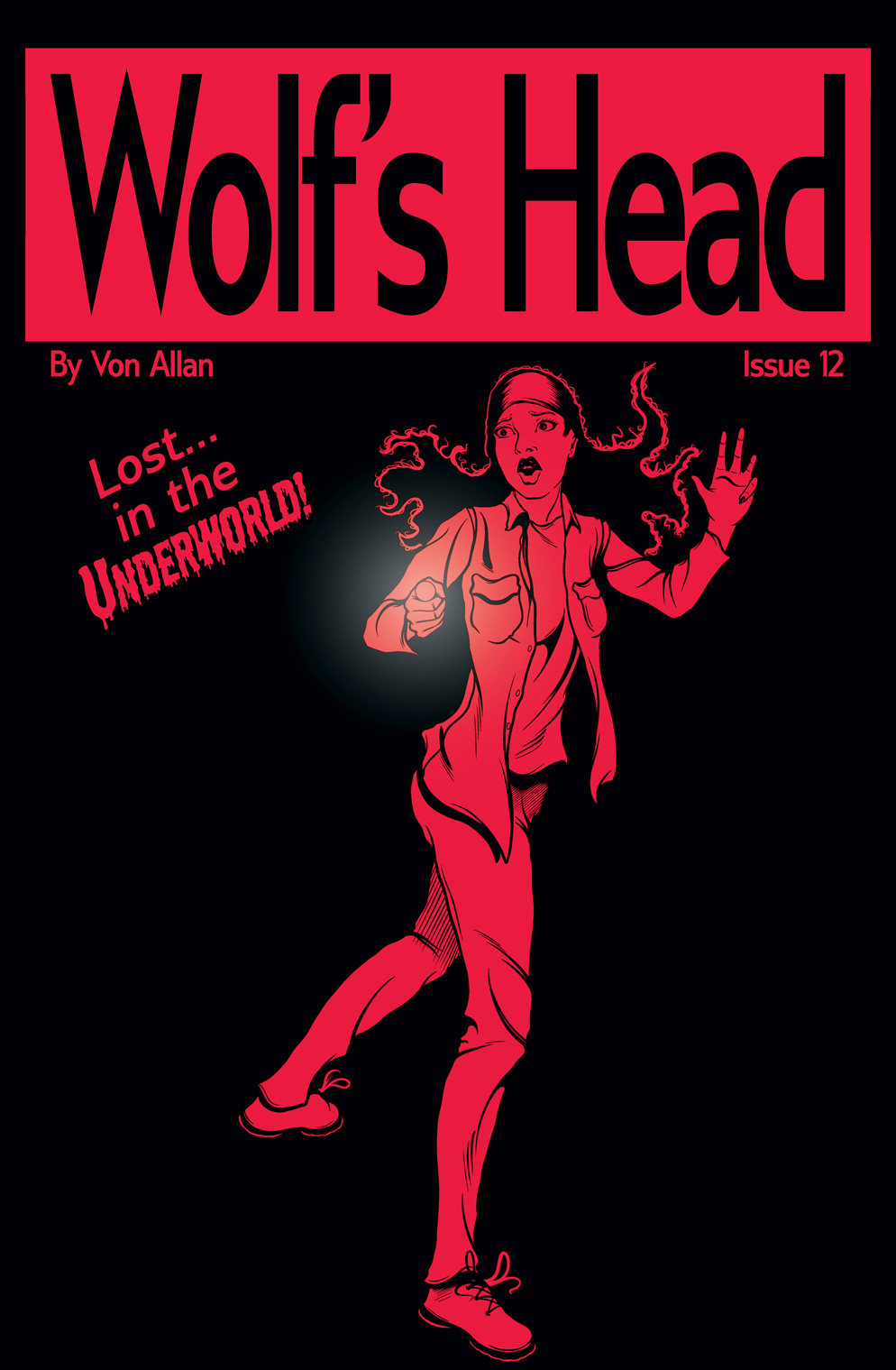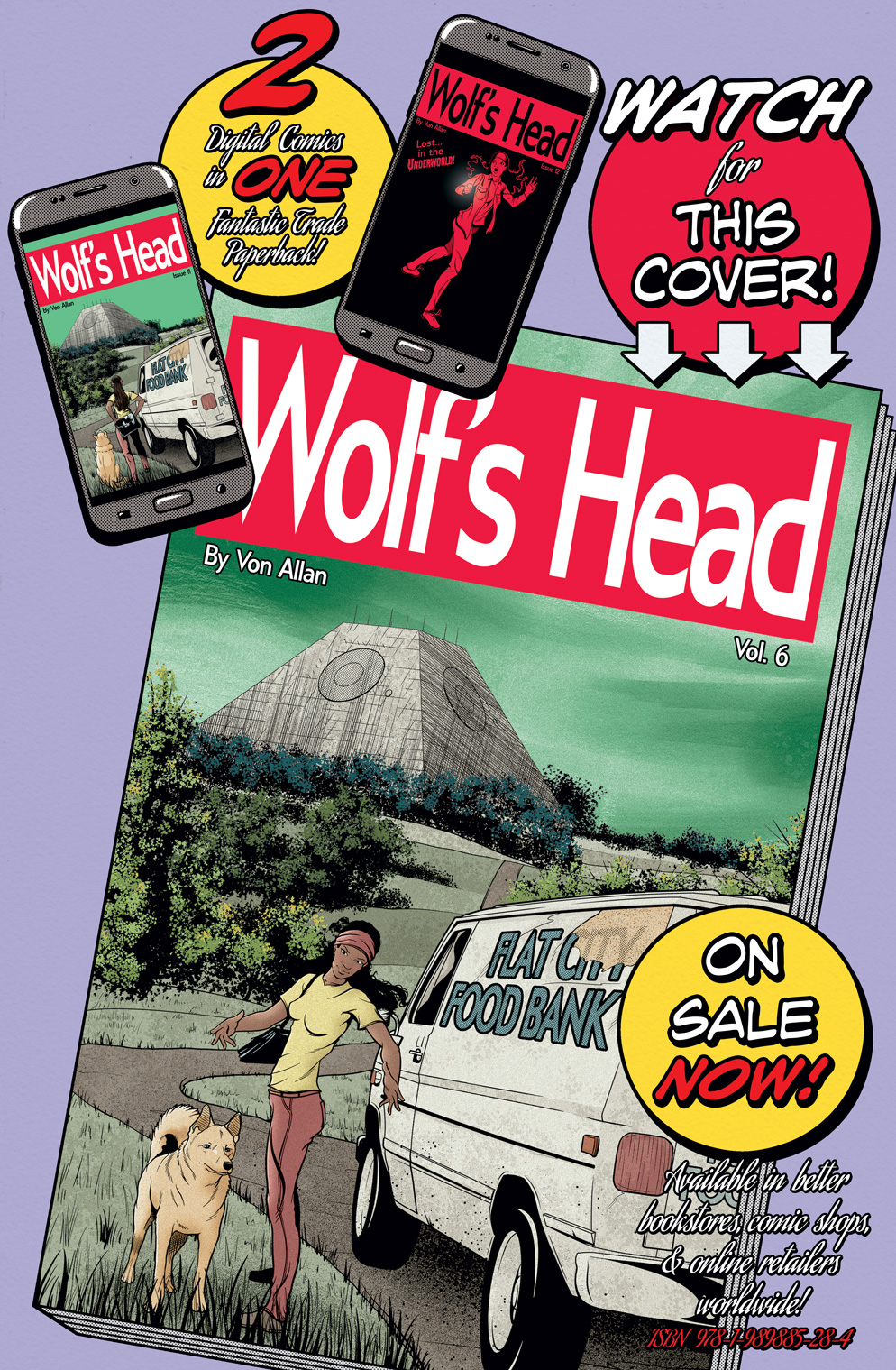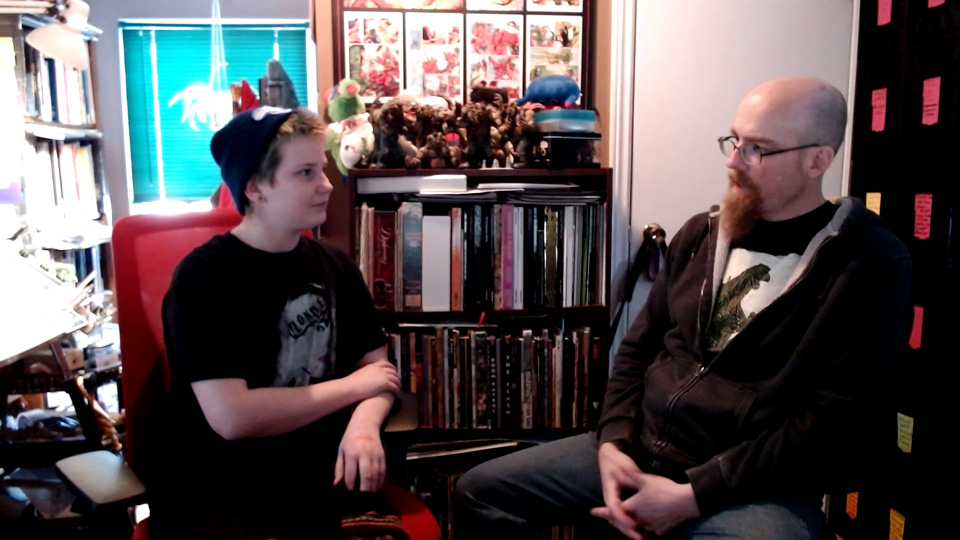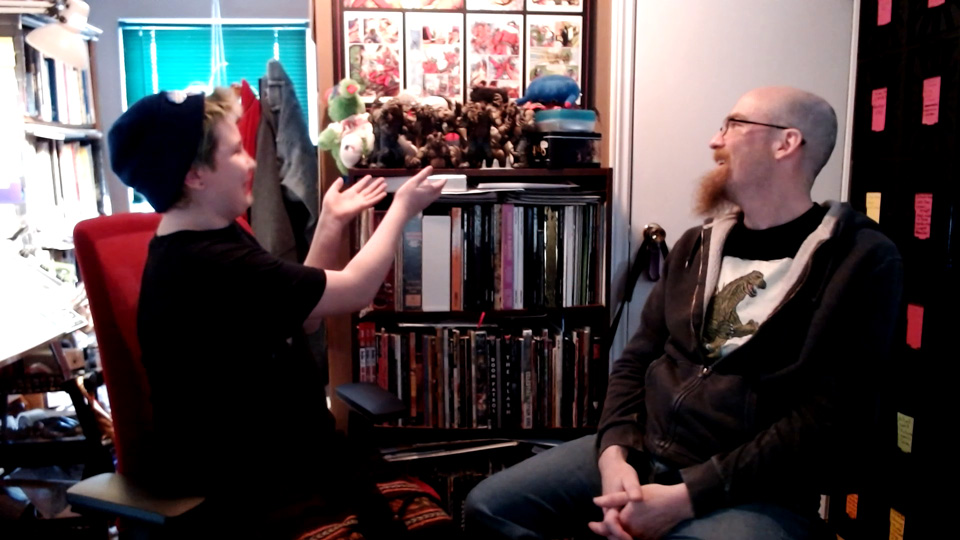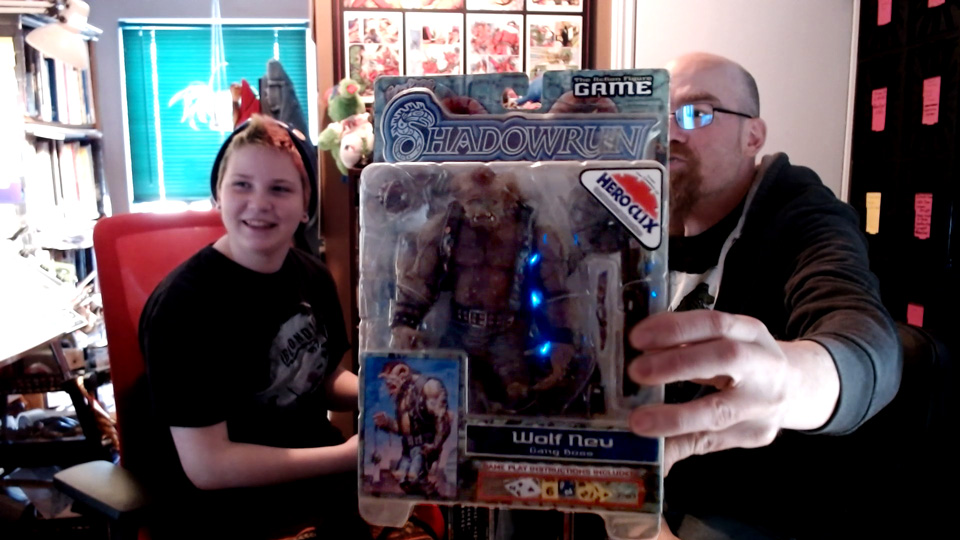Frank Plowright and his wonderful WOLF'S HEAD reviews
Things have been a tad busy in the ol’ studio, so I have been remiss in not sharing this a few weeks ago. Frank Plowright, the erstwhile writer at THE SLINGS & ARROWS GRAPHIC NOVEL GUIDE, reviewed the first six trade paperback editions of WOLF’S HEAD and had some very lovely things to say.
Mr. Plowright is a fascinating guy. From what I can tell doing a bit of sleuthing, he has been in the world of comics for one helluva long time. The earliest reference I could find is a mention from a fanzine, specifically Dan Slingsby’s BLACK AND WHITE #31 dated Summer 1982 (see screen cap below). He was 23 in 1982, so he’s been thinking and writing about comics for at least 43 years… and probably a few years longer than that. Folks, if that’s not a pedigree, I don’t know what is.
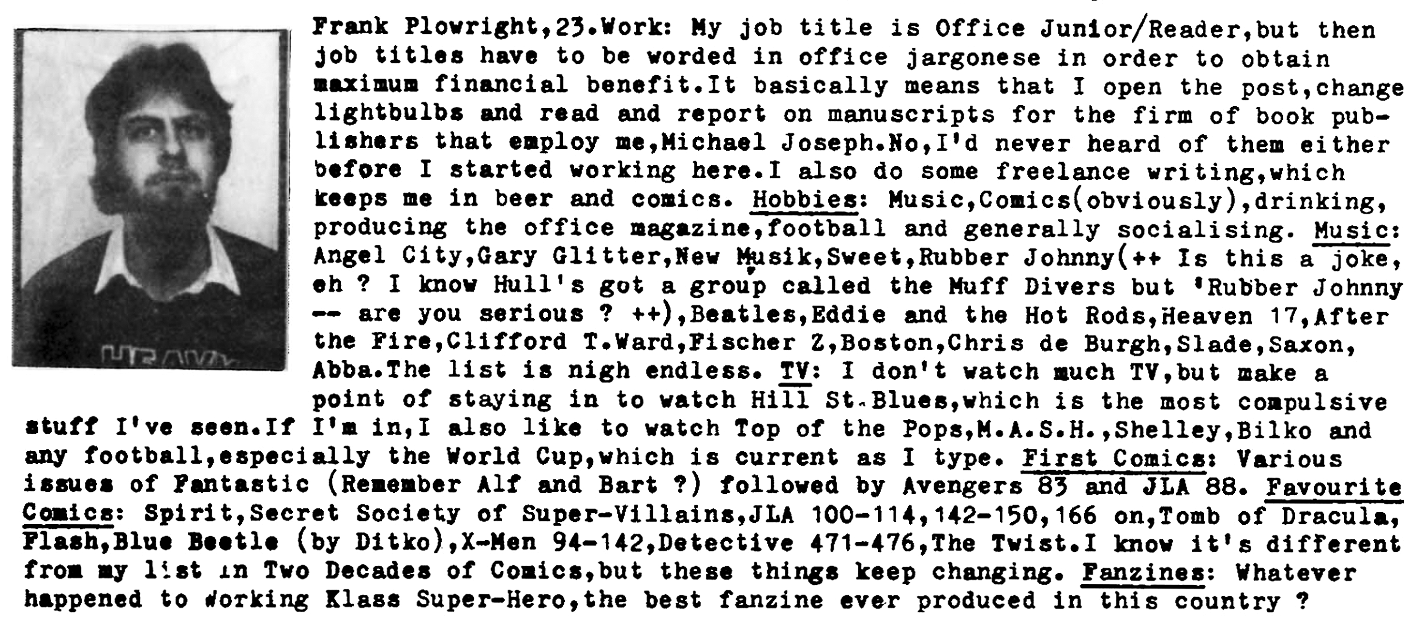
However, I first came across him much later, in 1997, when the first edition of THE SLINGS & ARROWS COMIC GUIDE was released by Aurum Press. This was back in my bookstore days, when I was running Perfect Books here in Ottawa, and I had ordered the book both for sale at the store and to make damn sure I could buy a personal copy, too. Frank was listed on the front cover as the official editor and, in the notes of contributors inside my beat-up 1st printing, it notes, “Frank Plowright co-organizes the UK Comic Art Convention.2 He’s spent many years masquerading as a writer, including a stint as British correspondent for The Comics Journal.3”
The COMIC GUIDE was (and is) a fascinating read. I have absolutely no idea how contributors were matched to the various titles, but almost 30 years later the book holds up extremely well. If you can find a copy, please do so. It’s a great read, though I can’t imagine anyone reading it in page order. Like an encyclopedia, it really rewards “jumping around.” One does get the sense that a different contributor might have had a different (perhaps radically different) point of view on a particular title, but that’s part of the fun! And Frank himself is not just the editor, but a reviewer of a number of different titles himself.
If I had a complaint (aside from the pesky disagreement with certain reviews!), it’s that the contributors (at least in my 1st edition) are not indexed at the back. While the book itself is well-indexed, not having an index of contributors is a definite miss. One has to pay attention to who is reviewing what, which is a bit disappointing, especially when the book is just that: a physical book. Nowadays a reference book like this is ideally suited for the internet, and I presume this is part of the reason that the COMIC GUIDE morphed into the online edition in the first place.
In some ways, I do prefer the COMIC GUIDE’s format and evaluation system to the current online version. The former simply used a recommended feature; one would read an entry, often covering many different issues and many different creators (think a review of the long-running AMAZING SPIDER-MAN) and then list recommended issues at the end. Simple, elegant, and with no rating system. I know many, many people like ratings (“10 out of 10”, “1 out of 5,” and so on) but I never have; from my point of view, they tend to “cement” or “lock” an evaluation. With art (broadly speaking), that is very difficult to do. Art is never zero-sum. Worse, feelings about art often change over time. Not always, of course, but opinions and tastes often do change. When the COMIC GUIDE moved online and became the GRAPHIC NOVEL GUIDE, the recommended system was dropped and was replaced with a 5 point scale (with 5 being the best). I don’t like it and I find it less useful then the original system. Worse, it’s actually more like a 10 point scale, since the online version allows fractional scores (so 4½ instead of 4 or 5).
Part of my hesitation with ratings and scales is that it’s never clear to me how a rating is calculated. That lack of transparency creates doubt, at least in my noggin’, and doubt is not helpful when evaluating a review. A “recommended” notation solves all of those problems; the reviewer liked it enough to recommend the work, but it is not burdened down with a rating. Or, to put it another way, is a 3 star review (out of 5) a recommended read? Or is a middle-of-the-road “it was kinda okay but had problems and you should probably avoid.” And, of course, that doesn’t get into the question regarding differentiating reviews with the same rank. In other words, are all 5 star reviews operating on the same level? The easy answer is “of course not,” but if so why so?
This is why, going all the way back to my own bookstore days, I never liked rating or ranking books. It’s too fungible, it’s too obtuse, and how rankings are determined is generally not transparent.
Wait. So what am I saying about WOLF’S HEAD and Frank’s reviews? Did he hate them or give them a bad rating? NO! Not at all. Let me do that again: NO! Not at all! I’m actually really really pleased with Frank’s reviews (aside from a few quibbles here and there). I’ll excerpt a number of his comments below, along with links to the full reviews, and you can judge for yourself. He gave most of the WOLF’S HEAD trade paperbacks 3 stars and two he gave 3½ stars. Now, based on the text of his reviews these are solid scores and (yup!) he does recommend the series. Would I have preferred no ratings and clear recommendations? YES. That’s exactly what I’m saying. This is somewhat influenced by my own sensibilities as well as my experience as a bookseller; I’m not convinced that a “3 out of 5” galvanizes people to seek out a work. It might, especially if people also read the actual review and are moved by it. Reviewing is an art in and of itself. But just a raw 3 out of 5? I don’t think so. That said, Frank (at least I think it was Frank!) was nice enough to also say, on their Facebook page, “We can’t understand how Wolf’s Head by Von Allan Studio slips so low on the public radar. It’s an intelligent, well-drawn character-based crime story with an appealing lead, and a creative touch of quirkiness. Six volumes out to date revealing the strange path Lauren Greene’s life has taken since quitting the police.”
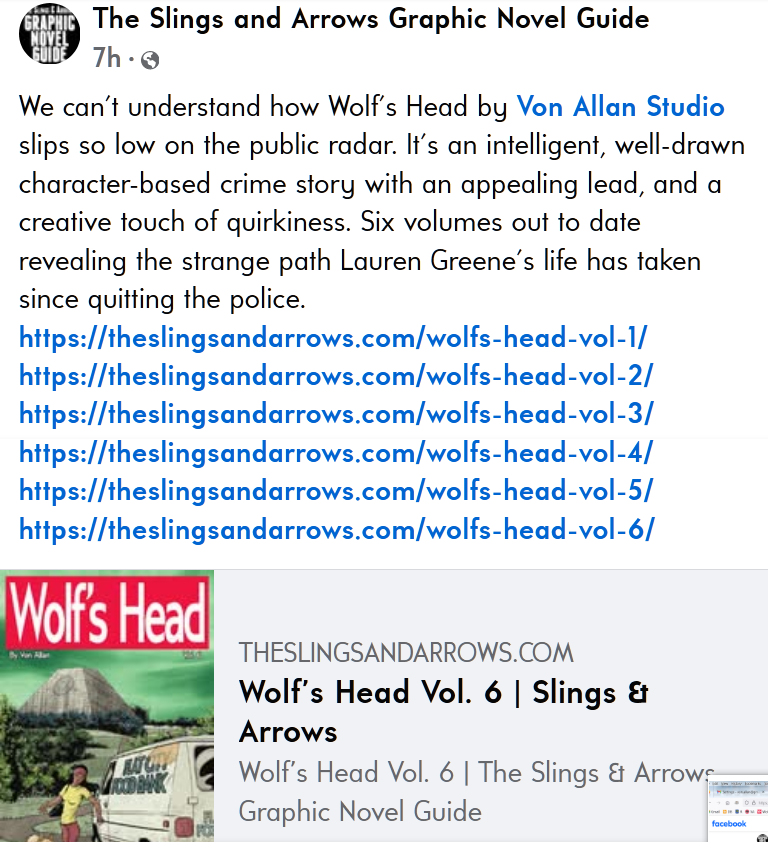
I should stress here that I suspect moving from recommendations to ratings probably helped with the online world. It’s easy to list 5 star reviews, which the GRAPHIC NOVEL GUIDE site does. It’s less easy to list recommendations; presumably one would have to break them down by reviewer, which could be awkward for all kinds of reasons. Ratings and scales are also prime candidates for debate and arguments (thus leading to views and hits), which I suspect might have also played into that choice.
With all of that said, let’s get on to Frank’s reviews!
First,
a list of all
of Frank’s
reviews of my work can be found at
https://theslingsandarrows.com/writer/von-allan/
WOLF’S
HEAD Volume 1:
“Allan
never takes the easy route of telling his story via head and
shoulders drawings without backgrounds. Full figures are the choice,
and plenty of them packed into small panels…
It’s only toward the
end that a full accounting of what’s actually happening is
supplied. It’s creative and raises ethical questions…
This is a fine opening volume
presenting an engaging cast living interesting lives, and that
continues in Vol.
2.” WOLF’S
HEAD Volume 2:
“Despite
Von Allan filtering in both SF and action thriller plots, the appeal
of Wolf’s
Head
is the cast, strongly characterised with everyone’s motivations
clear. Lauren remains central, with the opening pages suggesting we
don’t know her as well as we thought, but caring and willing to
take whatever action is necessary.” WOLF’S
HEAD Volume 3:
“There
are fantastical elements to Wolf’s
Head,
but creator Von Allan’s greater interest is in Lauren as a
person and what she’s going through. He delivers a fine
portrait of someone refusing to cave under pressure, but there’s
little respite for her as the problems keep piling up…
For
all the focus on Lauren’s experiences, a crime story with an SF
intrusion has been running since the first volume, and Allan brings
that to a head here very effectively, avoiding the obvious paths a
revenge story might take.” WOLF’S
HEAD Volume 4:
“Events
came to a head in Vol.
3
(or We
All Want to Change the World
if you bought the hardback version), but Lauren’s smart enough
to know the people she dealt with aren’t the types to let
things lie. Muscle for hire Frank McRossitor is especially able to
hold a grudge, and Lauren believes it best she remain away from
regular haunts…
Lauren still has a lot going on, and the maguffin of Machine means
events could head pretty well anywhere, so head to Vol.
5
with confidence.” WOLF’S
HEAD Volume 5:
“Wolf’s
Head
continues to be a well drawn and plotted series with the emphasis on
personalities. We’ve only just met Super Bob, seen on the
cover, but the way Allan defines him means he’s understandable
from the start…
Wolf’s
Head
continues to be unpredictable and compelling, and new circumstances
kick off Vol.
6.” WOLF’S
HEAD Volume 6:
“The tone has shifted from crime drama to something possibly
supernatural, although readers may suspect that despite the way
things look, there’s a more ordinary Scooby-Doo-style
explanation. We’ll see. Either way, despite jettisoning the
entire supporting cast to date Allan ensures Lauren is strong enough
to carry the story…
In his comments Allan mentions how his career to date has been one of
consistent struggle, which is a great shame for someone both talented
and persistent in producing a consistently entertaining drama. Try
Wolf’s
Head
and become captivated.” “Try
Wolf’s Head
and become captivated.”
I
have to admit this is one of the nicest comments anyone has ever said
about the series! So there you have it! I am grateful to Frank for these thoughtful reviews. And doubly grateful that he took the time to read and really embrace my work. Not every reviewer does that. Are they perfect reviews? Nope. He has critiques here and there, but I appreciate that. While I don’t agree with every single one, that is the beauty of art. It really is in the eye of the beholder. And Frank’s reviews are, overall, very positive. So please give his reviews a read and judge for yourself.
WOLF’S
HEAD is easy to find. While it is available in stores, you can
easily find the series on Amazon, Barnes & Noble, Bookshop.org
and so on. A handy list of links is at
https://www.vonallan.com/p/von-allan-studio-shop.html Lastly, it’s still a tough time for the comics industry, as many of you who are reading
this are no doubt well-aware. As I type this, Humanoids has furthered
their bankruptcy declaration, declaring Chapter 7 bankruptcy as
opposed to Chapter 11. As Sam Spratford noted
in Publishers Weekly, “…
the Chapter 7 proceedings will see Humanoids liquidate its assets,
eventually ceasing U.S. operations.” And,
of course, the distribution
fallout from Diamond’s bankruptcy continue (you can read
some of my thoughts on my own experiences with Diamond here).
At the same time, the excitement around comics as an art form is as
strong as ever. There are so many different ways to read and embrace
comics and graphic novels now and accessibility is, I think, better
than ever. I’m happy to have carved out a little niche of my
own with fans and readers. Nine volumes of WOLF’S HEAD is
nothing to sneeze at! 1 You
can read an online edition of it on Google Drive at
https://drive.google.com/file/d/1RiH4l7tPQ4N4wsyBbs1ltmh5Ay_4A_58/view 2 Sadly,
it appears that the convention, at least this iteration of it, came
to an end in 1998.
3 Online
at https://www.tcj.com/topic/frank-plowright/;
unfortunately The Comics Journal only has one current article up.
Footnotes

